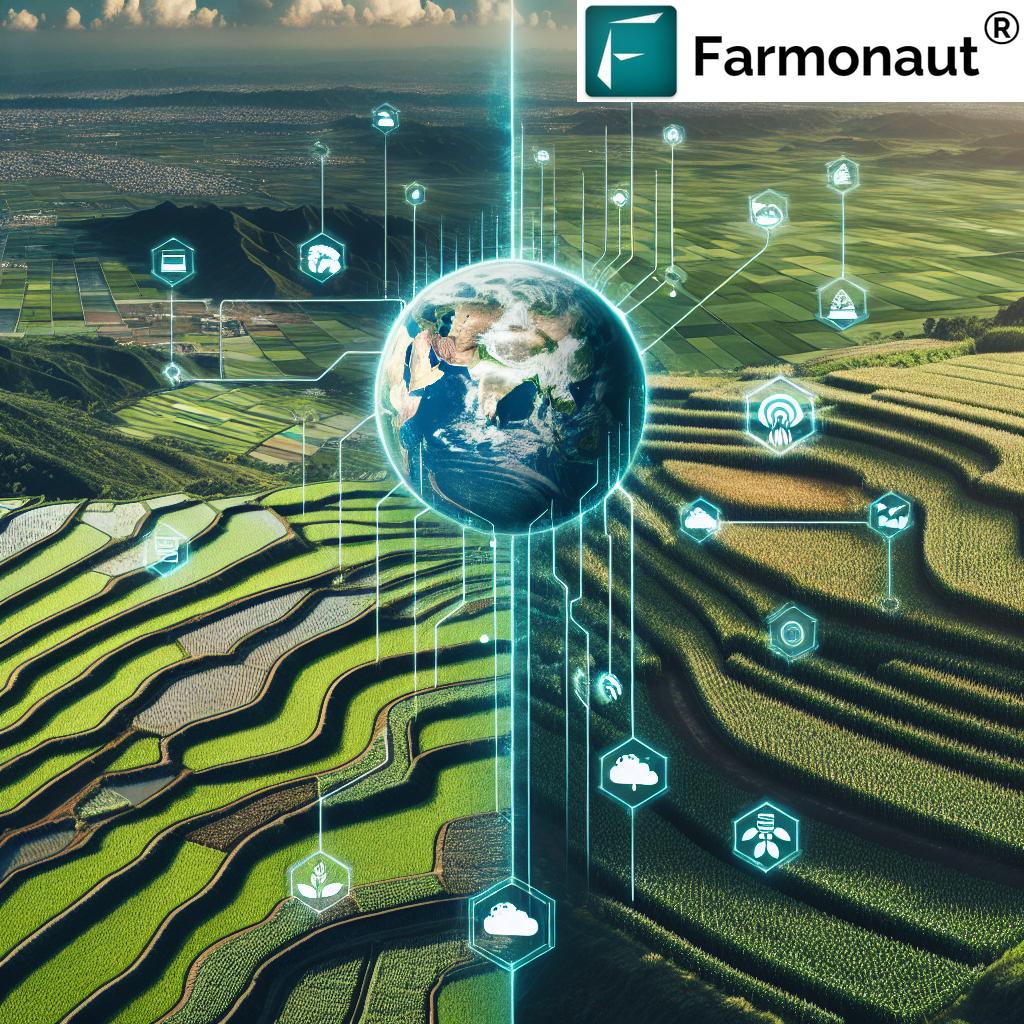Agribusiness Interruption Insurance & Flood Insurance PH: Driving Sustainability & Resilience in 2025
“Agribusiness interruption insurance can reduce disaster-related income losses by up to 35% for Philippine farmers in 2025.”
Summary: As we move into 2025, the Philippine agricultural sector stands at a pivotal moment amidst growing climate uncertainties and intensifying natural disasters. Agribusiness interruption insurance and business flood insurance harmony fl have emerged as critical shields, safeguarding farmers, agribusinesses, and cooperatives from disruptive losses and enabling continuity in production and supply chains. By integrating innovative risk management with sustainable solutions, these services are revolutionizing the way the best agriculture business in the Philippines is conducted—ensuring a secure future for Filipino agriculture in the dynamic landscape of Southeast Asia.
Why Insurance Matters for Philippine Agriculture in 2025
Philippine agriculture remains a key player in Southeast Asia’s landscape, feeding millions and driving rural economies. Yet, increasing frequency and severity of typhoons, monsoons, and unpredictable weather patterns—all intensified by climate change—pose a critical threat to all who depend on farming. From productive farmlands of Luzon and Mindanao, to aquaculture hubs of Visayas, risks like flooding, drought, pest outbreaks, and supply chain interruptions can devastate enterprises and communities overnight.
- Over 60% of Philippine agricultural land is flood-prone or typhoon-exposed
- Up to 80% of smallholder farmers lack comprehensive insurance coverage
- Direct crop damage and operational downtime can lead to long-term income losses and destabilize entire communities
In the face of these realities, tailored agribusiness interruption insurance and specialized business flood insurance harmony fl protections have emerged as the gold standard—providing a financial safety net and driving organizational resilience for both individual farmers and large agribusinesses alike.
Understanding Agribusiness Interruption Insurance
What is Agribusiness Interruption Insurance?
Agribusiness interruption insurance is a critical type of agricultural insurance designed specifically to cover the loss of income and additional expenses that occur when farming and related business operations cannot continue as usual due to a covered peril.
Unlike traditional crop insurance—which focuses on direct crop losses—interruption insurance addresses the broader financial impacts resulting from events such as:
- Machinery breakdowns (e.g., tractors, irrigation pumps)
- Supply chain disruptions (e.g., blocked transport routes, delayed input deliveries)
- Natural disasters (floods, typhoons, prolonged droughts)
- Fire, theft, or vandalism affecting barns, warehouses, or greenhouses
- Pest and disease outbreaks resulting in temporary shutdowns
With agribusiness interruption insurance, Philippine farmers and agribusiness owners are ensured that, even when operations pause due to these disruptions, vital expenses such as worker wages, loan repayments, and input purchases are covered. This enables a swift recovery and guarantees business continuity.
How Does Agribusiness Interruption Insurance Work?
- Triggering Event: A covered peril leads to interruption (e.g., a major typhoon floods a warehouse, halting harvest processing).
- Claim Submission: The policyholder documents losses and submits a claim to the insurer.
- Assessment: The insurer verifies the event, typically using field visits and— increasingly in 2025—satellite data for faster validation.
See how satellite monitoring assists in agriculture:
Farmonaut Web System Tutorial: Monitor Crops via Satellite & AI - Payout: Upon approval, the insurer compensates the farmer or business owner for the covered losses and additional expenses, helping them recover quickly and minimize further impact.
Key Features of Philippine Agribusiness Interruption Insurance in 2025
- Income Protection: Shields against revenue loss when disaster strikes.
- Extra Expense Coverage: Funds unforeseen costs to resume operations.
- Supply Chain Resilience: Supports recovery from third-party disruptions.
- Broad Applicability: Customizable to suit cooperatives, plantations, aquaculture, organic farms, and more.
- Integrated Technology: Many policies now leverage satellite data and digital claims processing for faster, more accurate assessments.
Explore Farmonaut’s Crop Loan & Insurance Verification Tools for efficient, tamper-proof risk-proofing in agriculture.
Why Is It Essential for Resilience?
As climate change brings more frequent and severe weather irregularities in the Philippines, agricultural businesses are at risk of escalating interruptions and broader financial losses. Having an interruption insurance policy in place is vital for ensuring operational continuity and safeguarding the future of Philippine agribusiness.
Business Flood Insurance Harmony FL: Lessons & Models for Philippine Agriculture
Why Flood Insurance Remains Critical in 2025
Flooding is the leading natural disaster risk for Philippine agriculture, costing billions annually in lost crops, infrastructure repairs, and supply chain disruptions. Key agricultural regions—such as Central Luzon, Cagayan Valley, Caraga, and Bicol—are especially prone to annual monsoon floods, river overflow, and coastal surges.
Business flood insurance harmony fl, as modeled in flood-management programs in the United States (notably in Harmony, FL), demonstrates how region-specific flood coverage can be adapted for the Philippine setting. These policies address the unique needs of farmers and enterprises in low-lying areas, providing:
- Repair/replacement of damaged facilities (barns, equipment, greenhouses)
- Inventory protection—from harvested crops to agri-inputs
- Compensation for operational downtime during cleanup and rehabilitation
- Coverage for both rapid and slow-onset flooding
Such insurance is especially vital for large rice farms, high-value fruit plantations, aquaculture businesses in the Visayas, and farms located adjacent to rivers or along the coast. By ensuring rapid claims and financial support, business flood insurance helps communities recover faster, minimizing long-term disruptions and ripple effects throughout the industry.
Tailored Programs and New Benchmarks
Flood coverage in Harmony, FL uses specialized risk models—factors like topography, hydrology, climate data, and infrastructure vulnerability to set fair premiums and reliable payouts. The Philippine insurance sector is now adapting these innovations, allowing comparable protections to be offered in key flood-vulnerable regions.
Learn more about flood risk and climate impacts on yields in the following video:
“In 2025, over 60% of Philippine agribusinesses will adopt flood insurance to strengthen climate resilience and sustainability.”
Coverage Examples for Philippine Agribusinesses
- Rice Farmer in Cagayan Valley: Receives repair funds quickly after fields and farm roads are submerged by typhoon-triggered floods.
- Banana Plantation in Davao: Claims payout for both lost produce and damaged irrigation systems, reducing downtime and enabling rapid replanting.
- Aquaculture Operator in Leyte: Claims for infrastructure losses (ponds, tanks, feed), ensuring continued production or maintenance until operations resume.
By setting new benchmarks in risk mitigation, sustainability, and farmer empowerment, flood insurance serves not only as a recovery instrument, but as a key enabler for sustainable growth in the Philippine agricultural sector.
Comparison Table: Agribusiness Interruption Insurance vs. Business Flood Coverage
| Insurance Type | Primary Risks Covered | Estimated Coverage Limit (PHP) | Typical Annual Premium (Estimated, PHP) | Potential Impact on Crop Yield Recovery (%) | Eco-Sustainability Features |
|---|---|---|---|---|---|
| Agribusiness Interruption Insurance |
|
₱2M – ₱250M (customized) | ₱40,000 – ₱500,000 | 25–40% increase in speed of recovery |
|
| Flood Insurance |
|
₱500,000 – ₱150M | ₱20,000 – ₱250,000 | 20–30% improved recovery, lower permanent loss |
|
Critical Benefits: Enabling Sustainable Growth and Safeguarding Agriculture’s Future
Why Agribusiness Interruption Insurance is a Game-Changer
- Reduces disaster-related losses: When interruptions occur, insurance coverage can reduce income loss by up to 35%, according to 2025 projections.
- Ensures financial stability: Quick payouts help reinvest in disrupted operations or new technologies, vital for both short- and long-term continuity.
- Strengthens supply chain resilience: Policies support expenses to restore logistics channels and maintain delivery timetables, ensuring business survival during crises.
- Drives eco-sustainable growth: By enabling climate-smart decisions (drip irrigation, pest-resistant crops, sustainable repair), insurance helps farmers adapt and invest in practices that protect the environment.
- Empowers communities & cooperatives: Smallholders and cooperatives benefit from shared coverage, spreading risk and fostering community resilience.
Using Farmonaut’s Carbon Footprinting module, farmers and enterprises can track and reduce emissions, ensuring that insurance-supported recovery aligns with global sustainability standards.
Flood Insurance: Anchoring Recovery in the Face of Climate Threats
- Rapid disaster response: With coverage for infrastructure and inventory, agribusinesses recover more quickly after floods, reducing operational downtime and long-term financial stress.
- Mitigates ripple effects: Timely insurance payouts help prevent knock-on losses across sectors—like missed contract deliveries or loan defaults in the post-disaster period.
- Promotes disaster-resilient construction: Insured businesses are incentivized to rebuild using flood-resistant designs and materials, further protecting future harvests and community livelihoods.
- Sets new industry benchmarks: With higher adoption rates, these policies raise sector-wide expectations for risk management and climate-resilient operations.
Farmonaut’s Role in Agricultural Risk Management: Technology Meets Insurance
Bridging Data Gaps, Empowering Insurance, and Fueling Sustainability
We at Farmonaut combine satellite monitoring, AI advising, and blockchain-based traceability to revolutionize risk management for agriculture, mining, and infrastructure worldwide—including the Philippines. Our technologies support insurers, farmers, cooperatives, and agri-enterprises in making informed, timely decisions before and after disasters.
- Satellite-Based Monitoring: Multispectral satellite imagery tracks vegetation health, soil moisture, and environmental impacts in real time, making risk assessment and claims validation more accurate and efficient.
- AI-Driven Insights – Jeevn AI Advisory: We provide custom strategies and instant weather updates to proactively manage risks of typhoons, floods, and infrastructure breakdowns.
- Blockchain Traceability: With secure and transparent chain-of-custody for crops and supplies, fraudulent claims are minimized and authentic insurance payouts are ensured. Read how this elevates transparency:
Farmonaut’s Traceability module - Fleet & Resource Management: Our platform enables optimized logistics during crises—critical for quick, safe, and cost-effective disaster response. Discover benefits here:
Fleet Management Solutions - Carbon Footprint and Environmental Tracking: Our carbon and emissions monitoring tools ensure sustainable recovery and smarter resource use after insured events.
Click here for our open API for seamless integration | Developer Docs
Benefits for Farmers, Enterprises, and the Entire Ecosystem
- Faster Claims Processing: Satellite documentation streamlines insurance payouts, reducing downtime.
- Accurate Risk Profiling: Insurers and policyholders get premium discounts for adopting risk-reducing practices highlighted by real-time satellite and AI monitoring.
- Sustainability at Scale: Technology ensures that both preventive and post-disaster farming actions are environmentally sound.
We enable the best agriculture business in the Philippines to combine innovation and security, laying the foundation for sustainable, climate-resilient growth.
Discover Large-Scale Farm Management via Farmonaut’s Agro-Admin App for integrated risk monitoring and digital resource planning in 2025.
Challenges, Trends & Future Outlook: Insurance in Philippine Agriculture, 2025 and Beyond
Key Challenges to Insurance Uptake
- Awareness Gaps: Many smallholders and emerging agribusinesses remain unfamiliar with interruption and flood insurance products.
- Perceived High Premiums: Farmers may view insurance as costly, especially in high-risk or remote areas.
- Access in Rural Regions: Distribution and claims processing often lack digital reach and localized support.
- Trust and Transparency: Concerns about fair claims assessment delay wider adoption, making it vital to use transparent technologies (e.g., satellite-based verification).
Emerging Solutions: Making Insurance Work for Every Filipino Agribusiness
- Satellite & Digital Claims: Filipino farmers can now rely on satellite imagery and cloud-based documentation for faster, verifiable claims.
- Weather-Indexed Insurance: Policies that automatically trigger compensation based on rainfall or temperature thresholds are expanding, making payouts fairer and more transparent.
- Government & Private Sector Commitment: There is increased momentum behind affordable, tailored insurance products with simplified digital onboarding for cooperatives and SMEs.
- Sustainability-Linked Incentives: Policyholders practicing sustainable farming or carbon reduction may access premium rebates or higher coverage limits.
The Road Ahead: Opportunities for 2025–2030
By 2025 and beyond, agribusiness interruption insurance and business flood insurance harmony fl will become mainstream for both large-scale and smallholder Philippine farmers. With technology adoption, streamlined digital claims, weather-indexed payouts, and increased financial inclusion, these products will serve as cornerstones of rural development and climate resilience.
- Over 3 million Filipino farmers and agribusinesses are projected to hold some form of agricultural insurance by 2030.
- Integrating digital solutions, farm traceability, and satellite monitoring will be key to maximizing benefits and driving sustainable growth sector-wide.
Best Agriculture Business in the Philippines for 2025: Risk-Proofed Pathways to Success
Which Sectors Stand Out—and Why Insurance Is Essential
The best agriculture business in the Philippines for 2025 exemplifies technological integration, climate-smart practices, and comprehensive risk management. These resilient, future-oriented sectors include:
- High-Value Crop Farming (Mangoes, Bananas, Coffee, Cacao)
- Aquaculture & Inland Fisheries
- Organic and Regenerative Farming
- Fruit and Vegetable Greenhousing
- Agro-Tourism and Community-Based Cooperatives
Comprehensive insurance (interruption, flood, and complementary covers) is particularly valuable for these best agribusinesses due to their
high dependency on climate, precise supply timelines, and significant capital investment in infrastructure and labor.
Strategic insurance not only safeguards investments and livelihoods but also enables innovation, sustainability, and expansion, making each venture more attractive to stakeholders, lenders, and partners.
Get started with Farmonaut on Android or iOS for real-time, satellite-powered farm & risk monitoring!
How to Create a Risk-Proofed Agribusiness in 2025
- Audit Risks: Evaluate climate threats (e.g., flooding, typhoons, drought) in your region.
- Implement Tech-Driven Monitoring: Use satellite and IoT sensors for real-time farm health tracking.
Check Farmonaut for complete satellite-based crop and infrastructure insights. - Integrate Comprehensive Insurance: Select policies covering both interruption losses and direct disaster damage.
- Prioritize Sustainability: Choose eco-friendly recovery options and document practices for premium benefits.
- Build Partnerships: Work with cooperatives, suppliers, and service providers committed to climate resilience and tech adoption.
Farmonaut Subscription Plans
FAQ: Agribusiness Interruption Insurance & Flood Insurance PH
What is the difference between agribusiness interruption insurance and traditional crop insurance?
Agribusiness interruption insurance covers a broader range of financial impacts—loss of income, supply chain disruptions, and extra expenses—when your business operations are halted due to disasters or unforeseen events. Traditional crop insurance mainly covers direct damage to crops from specific perils, but does not usually address lost business revenue or supply chain issues.
Is business flood insurance necessary if I already have crop insurance?
Yes. Flood insurance specifically covers not just your crops, but also infrastructure, equipment, stored inventory, and operational downtime after a flood. Having both ensures full-spectrum protection and quicker recovery.
How does Farmonaut’s satellite technology benefit my insurance claims?
Our satellite data and AI systems provide credible, real-time imagery of crop conditions and disaster impacts. This speeds up claims validation, ensures fair assessments, and reduces disputes—helping you get compensated faster and more accurately.
What are the most flood-prone regions in the Philippines for agriculture?
Central Luzon, Cagayan Valley, Caraga, Bicol, and coastal Mindanao are especially vulnerable due to river systems, monsoon exposure, and lowland geography. Farmers in these areas should prioritize flood insurance and digital monitoring.
How do I choose the best agriculture business in the Philippines to start?
The best opportunities combine high demand, climate-smart farming, technology integration, and strong risk management. In 2025, high-value crops, aquaculture, and organic farming are among the best choices—especially when protected by insurance and supported by real-time monitoring platforms like Farmonaut.
How much insurance coverage do I need for my agribusiness?
This depends on your location, business scale, typical risks, and infrastructure value. Use risk assessments and satellite monitoring insights to determine the right coverage, and consult insurers specializing in the agricultural sector for tailored advice.
Are there any eco-friendly benefits for insured farmers?
Yes! Insurers are increasingly offering premium discounts or enhanced coverage to farmers adopting sustainable practices (e.g., carbon reduction or organic systems), especially when these are tracked digitally through platforms like Farmonaut.
Conclusion: Take the Lead in Sustainable, Risk-Proofed Philippine Agribusiness
As 2025 unfolds, agribusiness interruption insurance and business flood insurance harmony fl protection are more than just risk-transfer tools—they are essential enablers for operational continuity, sustainable growth, and long-term success. By integrating comprehensive insurance, technological monitoring, and sustainable practices, Filipino farmers, cooperatives, and agri-enterprises position themselves at the forefront of resilient, future-ready agriculture.
- Shield your investments from both direct and indirect disruptions.
- Minimize downtime, recover revenue losses, and restore community livelihoods swiftly after disaster strikes.
- Utilize digital platforms—like Farmonaut—for real-time risk monitoring and seamless insurance workflows.
- Pioneer the best practices in Southeast Asia’s dynamic agricultural landscape.
Farmonaut is committed to empowering you—whether you’re a smallholder aiming for climate resilience or an established enterprise securing national food security.










